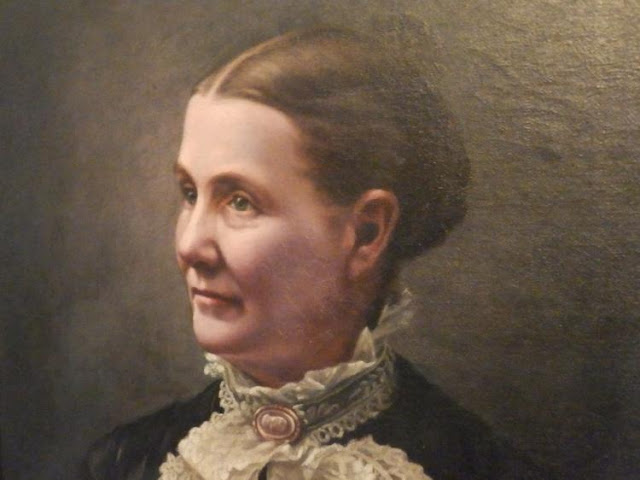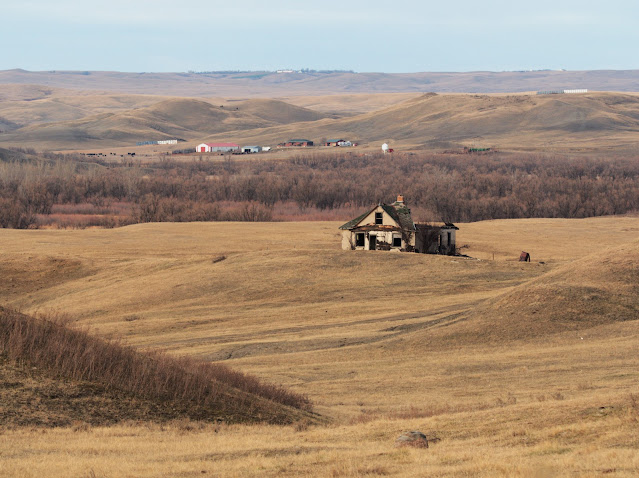 |
Mr. Egan
(continued from yesterday) |
I don't remember if I wrote that story at the kitchen table, or if I sat up in my room with pen and paper. For some reason, I don't think I typed it, although, a semester before if I'm not mistaken, I was taking Typing, an honest-to-goodness high school course a thousand years ago. By my junior year in high school, my sisters were both off to college. I was, for all practical purposes, an only child, so wherever I wrote the story, I was alone.
But I had in my mind a bear, a bear in the lakeshore woods, with me holding a pitifully inept shotgun. That's it.
I don't remember where I bought it, but I owned a wonderful little shotgun--a 16-gauge double-barrel I really loved and would, today, love to have hanging here up on my wall. It's odd that I don't remember where I got it, or how or when I got rid of it; but this short story of mine began with a kid in the woods, sitting in place--we used to call it "posting"--while cradled in his arms is a sweet little double-barrel 16-gauge shotgun--a Remington? I don't remember.
Sometimes we'd hunt squirrels. I can't begin to imagine what possible thrill any of us might have received from killing squirrels, but then, truth be told, I don't remember shooting many, if any, at all. But I do remember sitting in silence in the woods and waiting for them to appear, an odd species of hunting that had, I'd discovered, paid its own odd dividends.
What I learned about "posting," whether it was for squirrels or for deer, was that the woods came alive in silence. When you didn't make a fuss, didn't kick leaves around or brush through low-hanging branches, when you didn't move too quickly or move at all, things happened all around. Not only did squirrels appear, birds tramped around in the dead leaves or pranced with a kind of exquisite nonchalance on nearby branches.
That's where my story started, I thought, a kid posting in the woods, waiting for deer, not squirrels. I knew people did that, even though I never had hunted deer. There's this kid with a shotgun, and he's sitting in a woods, posting, watching the place come alive with a mysterious beauty all its own when straight out of northern Wisconsin, the mother of all black bears comes flying up out of the thick darkness, spitting and snarling and thinking to sup on the kid in the red jacket.
The thing is, that sweet 16-gauge just ain't going to do it--and the kid knows it. He has no choice, he thinks, so he turns and runs, flies through the woods, carrying that double-barrel while that she-bear romps along behind him--and, yes, there is some kind of cartoon horror. I'm just a kid.
The thing is, he's on a path through the woods, but the path isn't blacktopped. Here and there, up and down the path, tree roots have grown up and out of the path like the knuckles of so many giant hands, so while he's sprinting away and, when he dares looking behind him at ferocious death itself, sadly and dangerously he trips on one of those tree roots and goes splat on the floor of the woods.
It's looking, of course, like instant death--but remember, I'm just 16 years old, and no Hemingway.
But the kid has smarts. He almost instinctively know his only chance is to wait until he can smell that beast's breath, then hold that double-barrel out in front of him, keep it there until the bear is hovering, then let go, both barrels, and blow the beast's heart out.
Which he does. The bear, stunned, does something cartoonish as he suddenly realizes he's breathed his last, then falls atop the kid, the me in the story (I think I'm writing first person, even though I wouldn't have known what that meant), and he finds himself quilted by a a 400-pound monster.
But alive. Thank God a'mighty, alive.
End of story. No morals, really, pure action-adventure. I wasn't writing parables. And all of this was long before I'd ever heard the name Manfred or anything akin to Lord Grizzily.
I handed it in on time, as I remember, even a little proud of myself.
A week later, at the end of the class second-period English, Mr. Egan sauntered by my desk. We were waiting for the bell to ring, that moment in the olden days when we were "of the class" but no longer "in it."
He learned over. Whatever he intended to say was just to me, not to anyone else. "Tomorrow," he said, "I want you to read your story to the class."
I can't imagine I said anything, but I remember very clearly that the request came out of nowhere. I mean, I thought the story was good, but I had no idea whether or not he or anyone else would. Besides, it wasn't all that hard to write.
When tomorrow came, I was tangle of nerves. I wasn't a model student back then, not National Honor Society material. I was a jock, a gym rat, a member of almost any team OHS could field. It wasn't my thing to be a scholar.
When tomorrow came, I stood behind the wooden podium and started to read and almost immediately thinking that the class seemed unusually silent, kind of "into it," stunned almost, and I'm sure only a few of the kids were real hunters. The story got 'em. It pulled 'em in and ate 'em up.
And when it was over, I walked down the aisle to my seat in the back of the room. What I saw around me could have been zombies.
I don't know who anymore, but I think it might have been Reggie, a good old hunting buddy, who, perfectly startled, looked at me and muttered in all innocence, "Where'd you get that?" I grew up in a Calvinist community, but that question had nothing to do with sin and everything to do with awe. He couldn't believe I'd written the story I'd just read.
Did I decide at that moment to be some kind of writer?
Heavens no, but in that high school English class, 1964, Oostburg High School, Oostburg, Wisconsin, right there on the lakeshore, a kid with a 16-gauge double barrel bagged a trophy he'd never forget. He killed a b'ar that taught him--taught me!-even if I wouldn't have said it then, that there's something to be said about writing, something sort of amazing. Blew me away.
That high school story is long gone. I can't retrieve its weathered pages from some rusty file cabinet, can't post it here or read it to you. You'll just have to take my word for it, just as Mr. Egan's English class had to take my word that a kid on post in the lakeshore woods nearly got mauled by a black bear who'd wandered down from northern Wisconsin.
As close as I can remember, that's the story of my first story, almost sixty years ago. Don't look for any corroboration. I'm sure there's not a soul in the world who remembers but me. I've not forgotten.

































